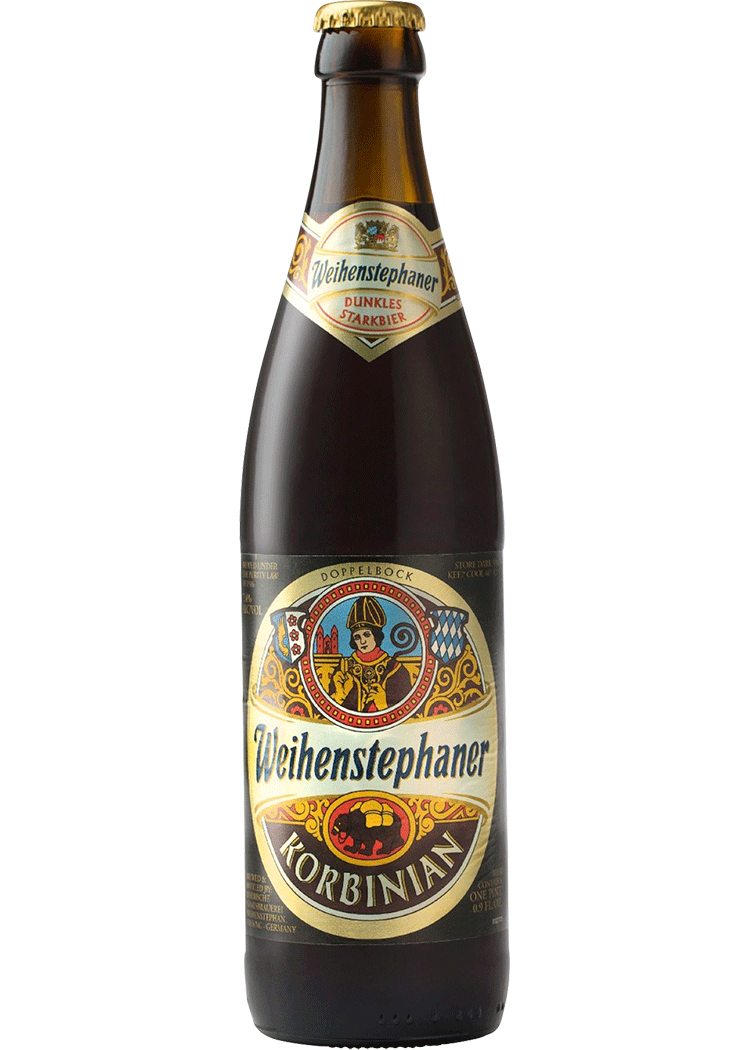tap to enlarge
Weihenstephaner Korbinian
16.9oz Btl
$4.99
+CRV
*Price, vintage and availability may vary by store.
*Price, vintage and availability may vary by store.
Product Highlights
Germany- Doppelbock- 7.4% ABV. This is a double bock beer that has what it takes. It is not just for lovers of strong beer. With a malty aroma and great taste, the Korbinian is a true beer specialty. It goes well with smoked meat and fish as well as wild roasts and fowl.
MaltyRichToasty
Product Details
OVERVIEW
Beer Type
Most Doppelbock beers are clear, deep burgundy to dark brown in color. They have a strong malty character and can be quite complex, exhibiting rich aromas and flavors of toasty caramel, toffee and hints of chocolate and dark fruits, such as raisin and plum. Low hop levels enhance their sweetness. Helles Doppelbocks—more deep gold in color and less common—are equally rich in toasty malt and are very smooth. Some golden examples may exhibit more hop character, yet the malt remains front and center. High ABV offerings can exhibit an alcohol aroma and flavor.
The Paulaner Monks named their beer “Salvator,” or Savior, a name under which the modern Paulaner Brauerei in Munich sells its Doppelbock today. Many modern Doppelbock beers created by other breweries have “-ator” at the end of their name, perhaps as a nod to the history and popularity of this style.
Producer Story
Beer has been brewed on site of Germany’s Bayerische Staatsbrauerei Weihenstephan (the Bavarian State Brewery at Weihenstephan) for approximately 1,000 years, so Weihenstephan has a good claim on being the oldest brewery in the world. It began as a monastery brewery, duly recorded when the abbot received a license from the city of Freising to brew and sell beer in 1040. It was the beginning of a long brewing legacy amid challenges that spanned centuries.
Between 1085 and 1463, the Weihenstephan monastery burned down completely four times and was destroyed or depopulated by three plagues, various famines and an earthquake. Each time, the monks rebuilt the monastery and brewery and continued to refine their brewing art. What these natural disasters could not take away, the state of Bavaria did in 1803 when, in a wave of secularization, it dissolved the monastery and repurposed its buildings. The brewery, however, remained, operating under state supervision.
In 1852, Bavaria’s Central Agricultural School and its brewing students moved to Weihenstephan. The school became the University of Agriculture and Brewing in 1919 and then the Bavarian State Brewery at Weihenstephan two years later. By 1930, it was incorporated with the Technical University of Munich and became the center of world brewing technology.
Despite Weihenstephan’s likely status as the world’s oldest brewery, it is also one of the most modern, with a unique combination of tradition and state-of-the-art science contributing to its top-quality brews. Weihenstephaner beers include Weihenstephaner Original (Munich Helles Lager), Korbinian (Doppelbock), Kristall Weissbier, Hefe Weissbier, Hefe Weissbier Dark and Vitus.
Source: Brauerei Weihenstephan
